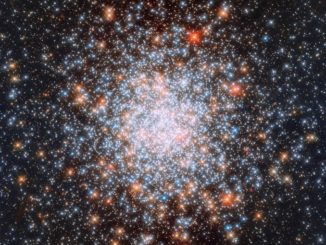
This star is just as intense as the scene unfolding around it. It is a Wolf-Rayet star, named after the astronomers Charles Wolf and Georges Rayet, a rare type of star known to have very high surface temperatures – well over 25,000 °C, next to the Sun’s comparatively cool 5,500 °C – and enormous mass, which ranges over 5–20 times our Sun’s. Such stars are constantly losing vast amounts of mass via thick winds that continuously pour from their surfaces out into space.
Hen 2-427 is responsible for creating the entire scene shown here, which has been captured in beautiful detail by the NASA/ESA Hubble Space Telescope. The star, thought to be a massive one in the later stages of its evolution, blasted the material comprising M1-67 out into space some 10 millennia ago – perhaps in multiple outbursts – to form an expanding ring of ejecta.
Since then, the star has continued to flood the nebula with massive clumps of gas and intense ionising radiation via its fierce stellar winds, shaping and sculpting its evolution. M1-67 is roughly ring-shaped but lacks a clear structure – it is essentially a collection of large, massive, superheated knots of gas all clustered around a central star.



